
26 March 2001 – 26 June 2001
This exhibition comprises of 211 colour photographs and 7 enlargements of Islamic residential architecture, both historic and contemporary. The exhibition is further supplemented by 9 posters of architectural drawings (divided into the architectural styles of the different regions) and architectural ornaments: doors, doorknockers, windows, bas-reliefs and ceramic tiles.
The exhibition also provides an insight into the expansion and development of the Islamic world from the first Muslim empire of the Ummayads in the Arabian peninsula; all the way to the Far East – Malaysia, Indonesia and the southern islands of the Philippines. However, the major motive of interest in this exhibition resides in the iconography of Islamic architecture.
The countries covered in the exhibition are:
The Mediterranean Basin: Andalusia, Malta
Examples of some of the historic buildings featured:
- The Casa de Pilatos in Seville, Spain. Built between 1492-1533 AD for the Dukes of Alcala.
- The Alhambra Palace of Granada, Spain. The Alhambra was the 13th century residence of the Nasrid ruler and founder of the dynasty, Muhammad I.
The African continent: Morocco, Algeria, Lybia, Sudan, The Arabic East, Zanzibar
Examples of some of the historic building featured:
- The Bahia palace in Marrakech, Morocco; built by Si Moussa at the end of the eighteenth century.
- The old dispensary of Zanzibar, Tanzania. This building was used as a home for a brief period; built in 1890 by the Indian merchant Tharia Topan.
The Near East: Syria, Saundi Arabia, Bahrain & Qatar, United Arab Emirates, Yemen, Oman
Examples of some of the historic buildings featured:
- The royal Palace Citadel in Aleppo, Syria; built towards the end of the Ayyubid Dynasty (1169-1260). The construction of the citadel began in the 13th century under the direction of the Sultan al-Zahir Ghazi.
- The Azem Palace in Damascus, Syria. Most grand houses in Damascus were built in the 3-courtyard plan. The “ablaq” tradition of bi-coloured stonework in altering panels id characteristics of the Syrian architecture, dating back to the 11th-12th
- The Jabrine Fort in oman adorned with rugs, niches and few pieces of furniture. The fort was built by Imam Bal’arab bin Sultan Al-Ya’ribi in the second half of the 17th
The Middle East: Iran, Uzbekistan, Pakistan, India, Bangladesh
Examples of some of the historic buildings featured:
- A caravanserai in ruins at Dintorni in Shiraz in Iran. The caravanserai, an example of the monumental secular architecture was once an importantn presence along the caravan routes of the desert as the rest stops for travellers.
- The Jahangir mahal in Orchha, India. This palace was built by Bur Sing Deo in early 17th
The Far East: Malaysian Peninsula, Indonesia
Examples of some of the historic buildings featured:
- The Carcosa Seri Negara in Kuala Lumpur, Malaysia, formerly the residence of the British High Commissioner.
- The Sultan’s Palace in Jogjakarta, Indonesia. This so-called Kraton begun in 1755 was finished 40 years later under the reign of Hamengkubuwanan I.
The exhibition provides a glimpse into the sites of Islamic culture – By studying the design, the material used for construction, the decorations and overall inner space of an Islamic house and its relationship with the outer space (the city for example).
Along with the lifestyle of the dweller, valuable information was discovrred regarding aesthetic principles, a sense of beauty, social and moral values, political conditions of the time, the economic status of the dwellers and the climate of the area.
Islamic houses may therefore, be considered as living encyclopedias of a rich religious tradition. Despite their diverse materials and decorations, they share a principal identity deeply rooted in the Islamic faith.
About Ovidio Guita
A professional photographer, Ovidio Guita graduated from the University of Florence, Italy in 1983 and has since collaborated extensively with the Department of Architecture history and Restoration of Architectonic Structures of the faculty. A member of the Association of Journalists, he is also on the staff of an Italian magazine, Ville Giardini.
*Publication for the exhibition is available at the Museum Shop, please click here for more information.
